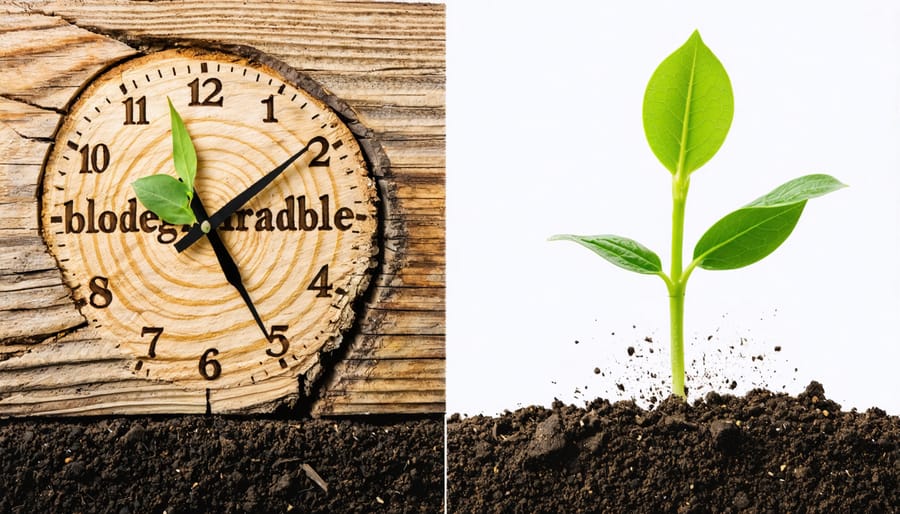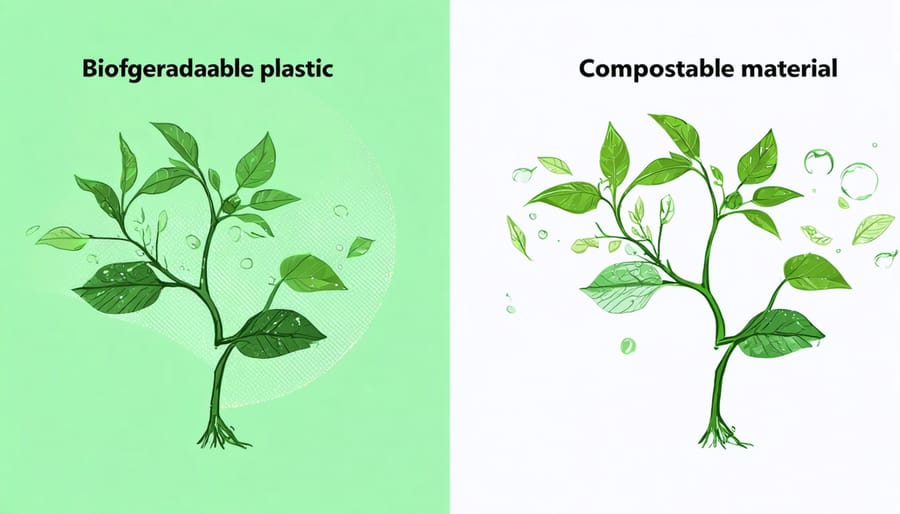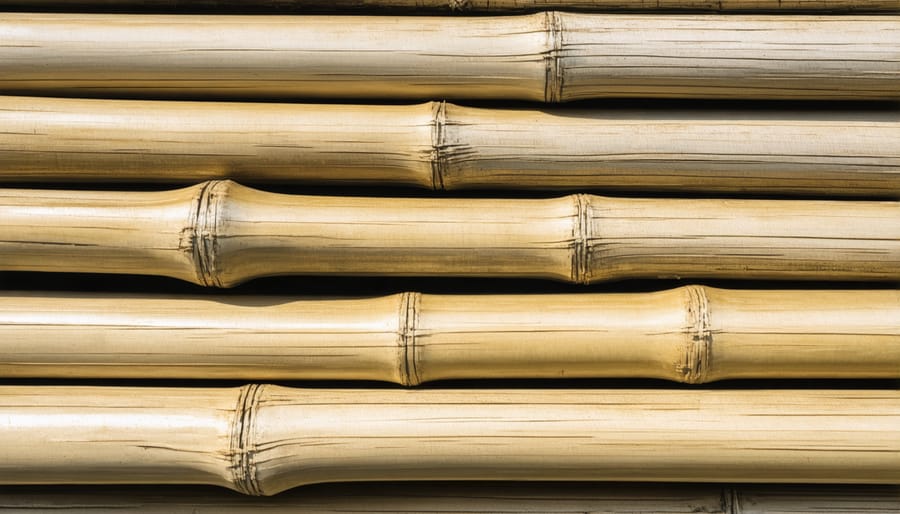Why Your ‘Green’ Shed Might Not Be As Eco-Friendly As You Think

Building an eco-friendly shed requires understanding the crucial difference between biodegradable and compostable materials, especially when seeking sustainable storage solutions. While both terms suggest environmental friendliness, they represent distinctly different end-of-life processes that impact your shed’s long-term environmental footprint. Biodegradable materials break down naturally over time through bacterial action, but may leave behind traces and take years to decompose. Compostable materials, however, completely transform into nutrient-rich soil within months under specific conditions, leaving no toxic residue. For homeowners committed to environmental stewardship, this distinction matters significantly when selecting building materials, finishes, and even storage containers for their outdoor structures. Understanding these differences ensures your investment aligns with both your practical storage needs and environmental values, while potentially saving money through proper material selection and maintenance.
Biodegradable vs. Compostable: What’s Really the Difference?

Breaking Down Biodegradable Materials
Biodegradable materials naturally break down through a process called biodegradation, where microorganisms like bacteria and fungi decompose the material into simpler compounds. This process occurs naturally in the environment, but the timeline can vary significantly depending on several factors.
For example, a wooden shed component might take 3-10 years to decompose completely, while certain biodegradable plastics can take anywhere from 6 months to 5 years. The decomposition speed depends largely on environmental conditions like temperature, moisture, and the presence of beneficial microorganisms.
Materials commonly labeled as biodegradable in shed construction include untreated wood, bamboo, and certain types of modified plastics. However, it’s important to note that “biodegradable” doesn’t always mean “quick to decompose.” Some biodegradable materials may still take decades to break down fully.
The decomposition process typically follows four stages: deterioration, fragmentation, digestion, and mineralization. During these stages, the material gradually breaks down into smaller pieces until it’s completely transformed into water, carbon dioxide, and organic matter that can benefit the soil.
Remember that proper disposal conditions are crucial – simply being biodegradable doesn’t guarantee environmental benefits if the material ends up in a landfill where decomposition is severely limited.
Understanding Compostable Materials
Compostable materials take eco-friendly disposal a step further by breaking down completely into natural elements that actually benefit the soil. These materials must meet specific standards, typically decomposing within 180 days in commercial composting facilities. Unlike simple biodegradation, composting creates nutrient-rich humus that can nourish plants and improve soil structure.
For a material to be truly compostable, it needs the right environment: proper moisture levels, oxygen, and temperatures between 120-170°F. Common compostable materials include food scraps, yard waste, and specially certified packaging made from plant-based materials like cornstarch or sugarcane fiber.
The benefits of compostable materials are impressive. They leave no toxic residue, reduce landfill waste, and create valuable compost that can enrich gardens and landscapes. Many homeowners find that using compostable materials in their yard maintenance routine helps create a closed-loop system, where waste becomes a resource for future plant growth.
Remember that home composting conditions differ from commercial facilities, so always check product labels for specific composting requirements.
Common Eco-Friendly Materials in Modern Shed Construction
Natural Biodegradable Options
Nature provides us with some of the most reliable and sustainable eco-friendly building materials that break down naturally over time. Wood remains a classic choice, decomposing through natural processes while adding nutrients back to the soil. Untreated lumber, particularly from sustainably managed forests, can break down within 3-10 years when exposed to the elements.
Bamboo has gained popularity as a fast-growing alternative to traditional wood. This remarkable plant can decompose within 2-3 years while offering excellent durability during its service life. Its rapid growth rate makes it one of the most sustainable building materials available today.
Other natural options include cork, which comes from tree bark and breaks down completely without harmful residues, and hemp-based materials that decompose within months under proper conditions. Natural fiber materials like jute and sisal also offer excellent biodegradability while providing sturdy construction elements.
For smaller components, materials like coconut coir and wheat straw can serve as excellent alternatives to synthetic options. These materials naturally return to the earth while offering comparable performance during their useful life. When choosing natural biodegradable materials, consider the local climate and intended use, as moisture levels and exposure to elements can significantly affect decomposition rates.

Innovative Compostable Solutions
The world of compostable materials is evolving rapidly, with innovative solutions emerging that combine functionality with environmental responsibility. Modern manufacturers are developing advanced plant-based polymers that break down completely in industrial composting facilities within 90-180 days. These materials often incorporate sustainable ingredients like cornstarch, mushroom roots, and agricultural waste products.
One exciting development is the creation of dual-layer compostable materials that offer both durability and quick decomposition. These materials feature a protective outer layer that maintains structural integrity during use, while the inner layer is engineered to break down more readily once composting begins.
Bamboo-based composites are gaining popularity for their strength and natural compostability. When combined with organic binding agents, these materials create sturdy panels and components that maintain their integrity throughout their useful life while ensuring complete decomposition in proper composting conditions.
Some manufacturers are now introducing “smart” compostable materials that change color or texture when they’re ready for composting, taking the guesswork out of timing. These materials often incorporate natural indicators that respond to environmental conditions, making it easier for homeowners to manage their waste responsibly.
Recent innovations also include compostable alternatives to traditional fasteners and hardware, ensuring that every component of a structure can be processed through commercial composting facilities without leaving behind non-biodegradable residues.
Making the Right Choice for Your Property
Climate and Environmental Factors
The way climate affects shed materials plays a crucial role in how quickly biodegradable and compostable materials break down. Temperature, humidity, and precipitation levels significantly impact decomposition rates, with warmer, more humid environments generally accelerating the process.
In regions with high rainfall, both biodegradable and compostable materials may deteriorate faster than in drier climates. However, compostable materials typically require more specific conditions to break down properly, including consistent moisture levels and temperatures between 50-140°F (10-60°C).
Soil composition also matters greatly. Areas with naturally acidic or alkaline soil can affect breakdown rates differently. Compostable materials often need a neutral pH environment to decompose effectively, while biodegradable items can usually handle a broader range of soil conditions.
UV exposure is another important factor to consider. Direct sunlight can speed up the deterioration of some biodegradable materials, while others might become brittle or lose their structural integrity. Compostable materials generally fare better when protected from excessive UV radiation, making them more suitable for covered or shaded applications.
Local microorganism activity, which varies by region and season, also influences decomposition rates. Areas with rich biological activity in the soil tend to break down both types of materials more efficiently than locations with less diverse microscopic life.

Maintenance and Longevity Considerations
When it comes to maintaining biodegradable and compostable materials, each requires different care approaches to ensure optimal performance. Biodegradable items typically have a longer shelf life when stored properly in cool, dry conditions, but their degradation timeline can be unpredictable once exposed to environmental factors. To extend their usability, keep biodegradable materials away from excess moisture and direct sunlight.
Compostable materials generally have a shorter functional lifespan but offer more predictable breakdown patterns. They require specific temperature and moisture conditions to decompose properly, usually breaking down within 90-180 days in a commercial composting facility. When storing compostable items, maintain room temperature conditions and avoid exposure to high humidity, which can trigger premature decomposition.
For both types of materials, proper storage is crucial. Consider using airtight containers or climate-controlled spaces to prevent unwanted degradation. Regular inspections can help identify any signs of premature breakdown, allowing you to adjust storage conditions accordingly.
Remember that while biodegradable materials might last longer initially, they may not break down as completely as compostable alternatives. Compostable items, though shorter-lived, offer more reliable end-of-life outcomes. When selecting either option, factor in your intended use duration and local disposal facilities to make the most sustainable choice for your needs.
As we’ve explored throughout this article, understanding the difference between biodegradable and compostable materials is crucial for making environmentally conscious decisions for your home and storage needs. While both options contribute to reducing environmental impact, compostable materials offer a more complete breakdown process under specific conditions, typically within commercial composting facilities. Biodegradable materials, while they do break down naturally, may take longer and don’t always return to their basic organic components.
For homeowners looking to make sustainable choices, we recommend prioritizing compostable materials when possible, especially for items that will have frequent contact with the ground or exposure to moisture. However, biodegradable options remain a valuable alternative when compostable materials aren’t available or practical for your specific needs.
Remember these key takeaways when making your decision:
– Compostable materials break down completely into non-toxic components
– Biodegradable items may take longer to decompose but still offer environmental benefits
– Consider your local disposal options and available composting facilities
– Check for proper certification labels to ensure genuine environmental claims
– Factor in your specific usage requirements and environmental conditions
By choosing either biodegradable or compostable materials, you’re already taking a positive step toward environmental stewardship. The best choice for your situation will depend on your specific needs, local disposal options, and intended use. Whether you’re storing garden tools or building a new shed, both options offer viable paths to reducing your environmental footprint while maintaining functional and attractive storage solutions for your home.

